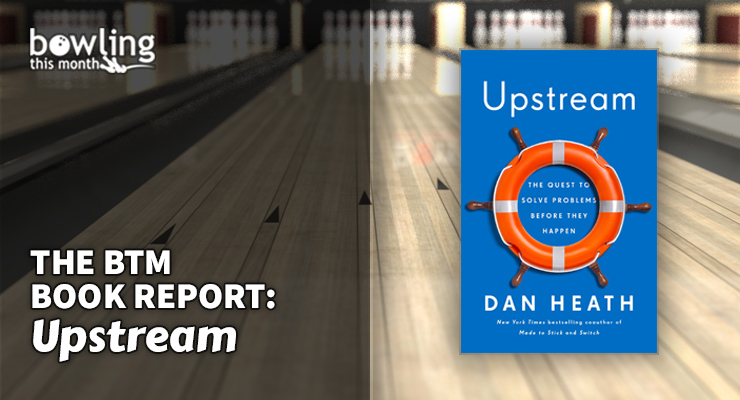At its core, Dan Heath’s Upstream is a book about societal change. However, its questions and approach to solving problems at an “upstream” level are not unlike correcting a bowler’s release timing at the foul line by correcting the ball start. This is an example of upstream thinking applied to bowling, but this book offers a deeper look at this kind of approach. To continue the bowling analogy, it shares the process of asking the right questions before even stepping out on the lanes, in hopes of solving problems before they happen. More importantly, this framework can be applied to league organizers, professional coaches, and local volunteers looking to improve the state of the game in their local area.
The author presents the barriers to upstream thinking, such as not even being aware of the problem (“problem blindness”) and a lack of ownership of a problem. If it is no one’s job to fix a problem, it won’t be fixed. The example given comes from the world of online travel bookings. The customer support team had the job of dealing with problems as quickly and as efficiently as possible. The sales and marketing team was responsible for website functionality and getting people to book. It was no one’s job to examine the customer support calls and reduce their number. When it was discovered that a significant portion was for itineraries after booking a trip, the company was able to address the issue, making it easier for people to access their itineraries or have them emailed once again without having to clog up the phone lines.
Next, the author presents seven questions to ask (and answer) in order to solve problems in an upstream manner, through a series of examples from homelessness to school system issues and even suicide. The first, and most important, relates to assembling the right group of people with enough experience in different areas to address an issue, and then taking responsibility for whatever changes are needed. From there, finding points of leverage (where change can occur) and actually having the right information to know whether you’re succeeding or not may sound straightforward, but these things are often more complex than you think. The bigger the problem, the more important these questions become. While some of the examples used in the book might seem like larger issues than improving a bowler’s physical game or growing youth ...
This article is only available to Bowling This Month subscribers. Click below to get instant access to this article and all of our other premium instructional content.
Subscribe to Bowling This Month
Already a Bowling This Month subscriber? Click here to log in.
